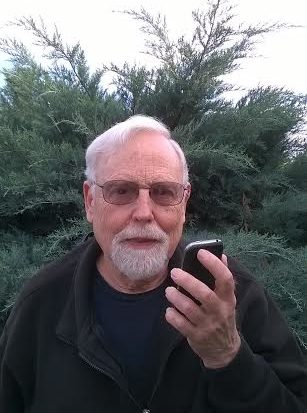
By Marc Keyser
(Editor’s note: This is part one of a Q&A series with Marc Keyser. Stay tuned for more in future publications.)
Q: Your name is Marc Keyser (Kiser), however, I noticed that your e-mail is ogkeyser@gmail.com? What does the “og” stand for?
A: It’s short for “old guy.” I’m 73, and I got the nickname in prison. Because the young man who bunked above me was a former drug dealer, I felt the need for a gangster moniker. I told him I wanted the name “Mad Dog.” He told me I couldn’t have the name “Mad Dog” because I don’t have a gangster bone in my body. So I had to settle for “og.”
Q: You don’t look like a criminal. I don’t see any prison tats.
A: I am an ex-con whistleblower. I wrote a book about terrorism in America called ANTHRAX Shock and Awe Terror: The Fatal Flaw in our National Security System. It was not well received by the government. I served close to three years in the Lompoc Federal Prison and about nine months in a halfway house here in Fresno.
Q: What was prison like?
A: Being locked up alternates between terrifying and tedious. After a while, you just accept that you are there, and there is precious little you can do about it, so you make the best of it.
Q: What do you think of the prison system?
A: Too many people serving too much time. It is a system of warehousing millions of people at an astronomical cost to society in a violent and brutal environment with little real rehabilitation. The United States has the largest prison system in the world and the most costly. I call it the American Gulag.
In my opinion, as an insider, a significant number of the people incarcerated do not belong in prison and certainly not for some of these outrageously long sentences. The prison system is, in far too many cases, a direct violation of the constitutional protection against cruel and unusual punishment. As a society, our treatment of prisoners is a crime against humanity.
Q: You don’t seem bitter about going to prison?
A: Prison was a learning experience. I met some wonderful people in prison. Doing time is an ideal way to write, read and really talk with a few close friends. For me, it was a sabbatical. You live in a cage, on the edge, in the moment knowing that some of the people you are locked up with can be extremely interesting and/or extremely dangerous. It’s like Daniel in the lion’s den—it strengthens your faith, but you don’t want to make any sudden moves until everyone has had breakfast.
Q: Were you ever in danger?
A: I was only shanked once, and that was with a pen to show me that it could be a knife next time.
Q: Did you have any positive experiences in prison?
A: I worked as a tutor in the education department. I had a young man who hadn’t finished third grade and couldn’t read. I worked with him on a daily basis, and soon he was reading The Chronicles of Narnia. He struggled with his limited reading vocabulary, but his phonics skills quickly developed and his reading comprehension was excellent. I tried to get him to write about his life, but he refused. He was paranoid about the cops finding out things.
One day, he came in the library and showed me a letter he had written (apparently the first letter he had ever written). It was beautiful. I was so proud of him I wanted to cry, but we don’t do that in prison.
When we first started, I asked him what he would do when he gets out. He said he would probably live out of a dumpster and deal drugs again. I’m hoping that being able to read and write—and write beautifully—will give him more hope in finding a more productive path in life.
Q: What was so terrible about your book ANTHRAX: Shock and Awe Terror that they put you in prison?
A: The book was on a CD, and the CD had a packet of sugar on the front with the label “ANTHRAX Sample.” I sent it to some 110 media outlets. The purpose was to stimulate a practice terror attack to prove that we are not ready for terror in America. It was like a fire drill, only this was a terror drill.
Q: It doesn’t appear to have changed things.
A: Perhaps I needed a bigger whistle.
Q: What is the book about?
A: On the morning of Sept. 11, 2001, 19 al Qaeda terrorists dressed as tourists boarded four commercial jet airliners. They commandeered the planes, took the controls and used them as guided missiles loaded with passengers and 10,000 gallons of jet fuel. The terrorists proceeded to crash two jets into the Twin Towers at the World Center and one into the Pentagon while passengers on the fourth airliner fought back, and the plane crashed into a field in Pennsylvania.
Some 3,000 people were killed, the World Trade Center was demolished,
the Pentagon was bombed and the stock market crashed costing investors some $1.4 trillion. This is a paradigm shift in asymmetrical warfare. This presents a totally new type of threat to our survival.
Q: Why is that?
A: A terrorist attack that crashes the stock market is an anomaly—just as the atomic bomb dropped on Hiroshima was an anomaly. It wasn’t just another bomb.
To be continued.
*****
Marc Keyser is author of ANTHRAX: Shock and Awe Terror. Contact him at ogkeyser@ gmail.com or visit www.occupysolidarity.us.
